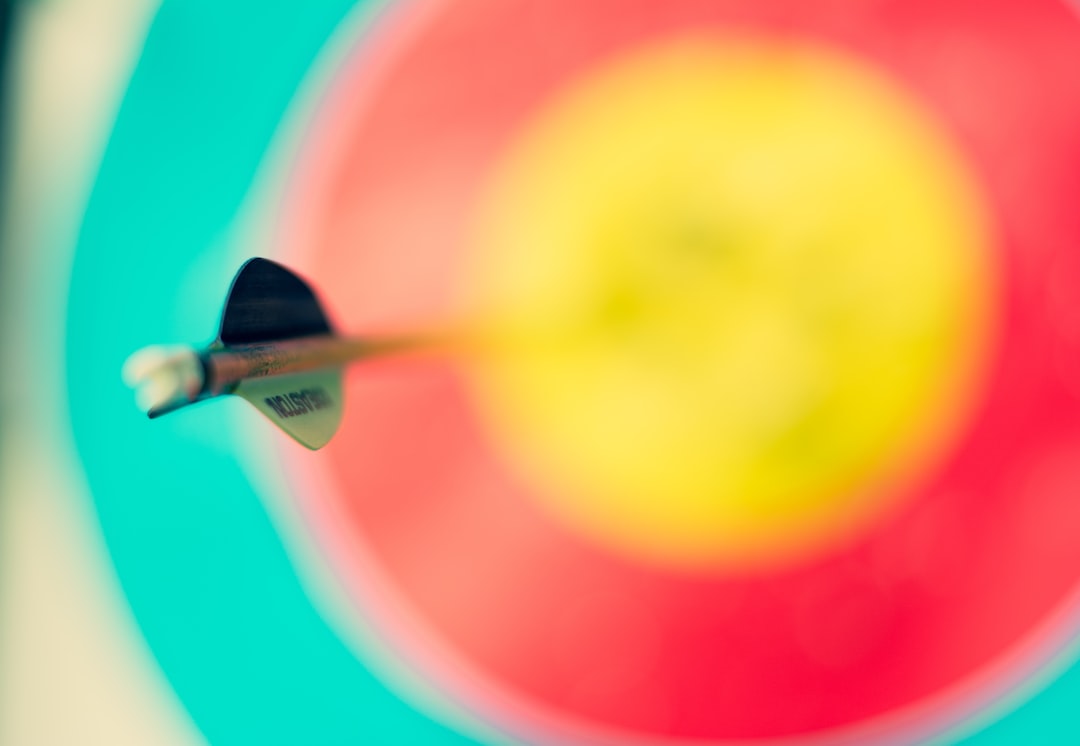When it comes to hunting big game, having an arrow build that is optimized for accuracy and knockdown power can be the difference between a successful hunt or not.
But how do you know what factors are important when constructing your own arrows? What type of wraps and inserts should you use? How does draw length affect ideal arrow weight?
In this blog post we’ll explore all these topics related to “arrow build” so you can make sure your setup will help bring down any game animal with confidence.
For visual learners, you might find this video helpful for arrow builds:
Important Factors for Accuracy
Arrow mass is a pivotal element in achieving precision when shooting.
Heavier arrows will fly more slowly and are less affected by wind, making them easier to aim accurately.
However, they also require more energy from the bow to launch them, which can reduce your shooting speed and distance. It’s important to find a balance between arrow weight and draw length that works for you.
Draw length affects how much power your bow has at full draw. A longer draw length means more power but also requires heavier arrows for stability in flight. If you have a short draw length, then lighter arrows may be better suited for you as they will travel faster with less effort from the bow.
FOC (Front of Center) is an indicator of arrow balance and stability in flight; higher FOC values indicate greater stability in flight due to increased mass near the front end of the arrow shaft where it meets the fletching or vanes on its way out of the bowstring during release.
To achieve maximum accuracy, try experimenting with different FOC values until you find what works best for your setup.
Arrow spine refers to how stiff or flexible an arrow shaft is; too stiff an arrow won’t flex properly upon release while too flexible an arrow won’t maintain its shape during flight resulting in poor accuracy and trajectory control issues downrange.
Finding just right amount of stiffness or flexibility can be tricky so experiment with different spines until you find what works best for your setup before committing yourself fully into using any particular type/brand/model combination exclusively over time
By understanding the important factors for accuracy, such as arrow weight, draw length, FOC (Front of Center), arrow spine and balance, you can begin to build an effective hunting arrow that will provide optimal performance when pursuing big game.
Building an Arrow for Hunting Big Game
When building an arrow for hunting big game, selecting the right shafts is essential. Shafts come in a variety of materials such as aluminum, carbon and fiberglass.
Aluminum arrows are lightweight and durable but can be expensive.
Carbon arrows are more accurate than aluminum due to their stiffness and straightness retention, however they tend to be more costly.
Fiberglass arrows are less expensive than both aluminum and carbon but may not provide the same level of accuracy or durability as other options.
Inserts and wraps play an important role in creating a well-balanced arrow that will fly accurately when released from your bow. Inserts help secure components like broadheads while also providing additional weight for stability during flight.
Wraps add extra protection against wear-and-tear on the arrow shaft itself by covering up any exposed areas where components have been attached with glue or epoxy resin. Heat shrink tubing wraps offer a quick solution for adding protection without having to use adhesives or solvents which could damage the shaft material over time if not applied correctly.
Glue-in wraps require more skill to install properly but provide superior strength compared to heat shrink tubing wraps while push-in inserts make it easy to attach components without having to use any tools at all – just press them into place.
Knocks complete your arrow setup by providing a way for you to attach fletching securely onto the back end of your shaft so that it flies true when released from your bowstring.
Knocks come in two main types: flat plastic knobs which fit snugly overtop of nock grooves cut into the back end of most modern arrow shafts; or traditional brass knobs which require you to drill out holes before attaching them with screws (or rivets).
Nocks also come in two varieties: half moon style which fits onto string loops; or pin nocks designed specifically for D loop strings used on compound bows today.
Once you have selected the components for your arrow, it’s time to assemble them into a complete hunting arrow. From wraps and inserts to knocks and nocks, there are several different ways of constructing an arrow that is suitable for big game hunting. The next step in this process is to learn about the types of wraps and inserts available on the market today.
Types of Wraps and Inserts
Accuracy is a crucial factor when it comes to the pursuit of game. Knowing the right type of wraps and inserts for your arrows can help you get the most out of your setup. Various kinds of wraps and inserts exist, each offering their own pros and cons.
Aluminum Inserts:
Aluminum inserts are lightweight and durable, making them a popular choice among hunters. Aluminum inserts boast an impressive strength-to-weight ratio, and come in a range of sizes to suit diverse arrow shafts. The downside is that they don’t offer as much protection from wear or impact as other materials do.
Carbon Inserts:
Carbon inserts are more expensive than aluminum but offer superior durability and strength while being lighter weight than aluminum inserts. Inserts of varying dimensions are accessible, enabling one to customize their set-up for optimal performance.
Heat Shrink Tubing Wraps:
Heat shrink tubing wraps provide an extra layer of protection against wear or impact on the arrow shaft itself by encasing it in a thin plastic sleeve that shrinks when heated up with a heat gun or torch. This wrap also adds some additional weight which helps stabilize the flight path of the arrow during flight for improved accuracy at longer distances .
Glue-In Wraps:
Glue-in wraps use adhesive to attach directly onto the surface of an arrow shaft for added protection against wear or impact damage while adding minimal additional weight compared to other options like heat shrink tubing wraps. These wraps usually require special glue specifically designed for this purpose which must be applied carefully in order to ensure proper adhesion between surfaces .
Push-In Wraps:
Push-in wraps are similar to glue-in wrappings except they utilize small metal clips instead of adhesive, allowing them to be easily installed without leaving any messy residue behind after removal. Like glue-in wrappings, these add minimal additional weight while providing increased durability over bare arrows due to their ability to absorb impacts better than unclad arrows would.
Once you have decided which type of wrap and insert best suits your arrow build, it is important to understand the knockdown power versus accuracy that comes with each component in order to optimize your setup for maximum performance.
Knockdown Power vs Accuracy
Knockdown power and accuracy are two important factors to consider when building an arrow for hunting big game. Kinetic energy and momentum are key components of knockdown power, which is the ability of an arrow to penetrate through tough hide and bone.
Momentum is the product of mass times velocity, so increasing either will increase knockdown power.
Penetration and expansion also play a role in how much damage your arrow can do on impact. Expansion helps create a larger wound channel while penetration ensures that your arrow reaches its target’s vital organs.
Balancing velocity with weight is essential for achieving maximum performance from your hunting arrows. Too much mass can impede the velocity of your arrows, diminishing their ability to bring down large animals like elk or moose.
On the other hand, if you don’t have enough weight then you won’t get enough kinetic energy behind each shot to ensure a clean kill shot every time.
Optimizing your setup by testing different weights until you find what works best for you is key to finding success in the field when hunting big game animals such as deer or bear.
The right combination of arrow build can be the difference between a successful hunt and an unsuccessful one, so understanding the relationship between knockdown power and accuracy is key. Now let’s dive into how draw length affects ideal arrow weight to further optimize your setup.
Draw Length Affecting Ideal Arrow Weight
Understanding draw length is an important factor when building arrows for hunting big game, just like selecting an arrow release.
Draw length is the distance from the bow’s grip to the back of your arrow at full draw. It can be measured in inches or centimeters and will affect how much power you generate with each shot, as well as what type of arrow weight works best for you.
Knowing your draw length helps determine which components are needed to create a properly balanced arrow that will fly accurately and hit its target consistently.
Finding the right arrow weight starts with understanding your draw length and selecting shafts accordingly.
Heavier arrows require more energy to launch, so if you have a shorter draw length, it may be beneficial to use lighter shafts that won’t require as much force to propel them forward.
On the other hand, longer draws benefit from heavier arrows since they provide more momentum on release and travel further distances without losing accuracy or speed.
Adjusting your bow settings can also help fine-tune performance based on different types of arrows used in combination with specific draw lengths.
For instance, increasing poundage (the amount of pressure required by a bowstring) can give heavier arrows extra oomph while decreasing poundage allows lighter ones to reach their maximum potential without overstressing the string or limbs during launch.
Additionally, adjusting brace height (the distance between string and riser) affects where an arrow lands relative to its point of aim due to changes in trajectory caused by different weights being released at various speeds from varying distances away from pin placement points along its path towards target impact zones.
Testing different weights is essential to finding the best fit for each individual shooter’s setup, based on their own unique needs.
Through this process, one can gain a better understanding of how draw length and arrow weight interact in order to achieve maximum accuracy when shooting at targets or hunting game. By adjusting bow settings such as poundage and brace height, it is possible to fine-tune performance.
With enough practice, these techniques can be mastered and applied successfully during real world scenarios involving actual live animals hunted outdoors under field conditions.
Draw length is an important factor when selecting components for your arrows. It affects the ideal arrow weight and can have a significant impact on accuracy, speed, and overall performance. Understanding draw length and finding the right arrow weight are key to getting the most out of your bow setup.
Understanding Draw Length:
Your draw length is determined by measuring from the nock point (where you place your fingers) to where the string rests against your face at full draw. This measurement will give you an idea of how much energy you’re putting into each shot, which in turn determines what type of arrow weight is best suited for that particular setup.
Finding The Right Arrow Weight:
Generally speaking, heavier arrows require more energy to get them up to speed than lighter ones do. Hence, if you have a longer draw length, then heavier arrows may be the preferable option since they necessitate more energy to reach their peak velocity. On the other hand, shorter draws may benefit from lighter arrows since they don’t need as much power behind them in order to achieve optimal speeds and trajectories.
Adjusting Your Bow Settings:
Once you know what type of arrow weight works best with your particular bow setup then it’s time to adjust any settings accordingly such as let-off or poundage (the amount of force required in order for one inch of movement).
These adjustments should be made based on personal preference but keep in mind that too much let-off or poundage could cause issues with accuracy due to inconsistent release points while shooting so try not go overboard here.
Testing different weights is a great way to find the ideal arrow weight for your bow setup. If possible, it’s recommended to experiment with various weights in order to determine which one works best for you and your shooting style. Taking some time to try out different options can help narrow down exactly what will provide the most consistent accuracy and performance, so make sure to take advantage of this opportunity if available.
Lastly, kinetic energy plays an important role when choosing between various types/weights of arrows – basically this refers to how quickly something accelerates once released from its source (in our case being bows). Heavier objects tend to accelerate slower than lighter ones do, so it is important to consider all factors involved before making any final decisions about which type/weight suits your needs best.
FAQs in Relation to Arrow Build
Is it cheaper to build your own arrows?
The expense of crafting your own arrows is contingent on a plethora of variables, making it difficult to determine which option offers the best value. Generally, if you have the tools and supplies to do so, making your own arrows could be a more budget-friendly choice than buying them pre-made.
However, if you lack the knowledge or experience required for arrow construction, purchasing ready-made arrows may be more economical in the long run. Ultimately, the choice of whether to craft arrows oneself or purchase them pre-made is contingent upon individual tastes and financial constraints.
What is the best wood for arrow making?
The best wood for arrow making is a combination of hardwoods such as hickory, maple, and ash. Hickory is known for its strength and durability while maple provides flexibility. Ash offers good shock absorption properties which makes it ideal for use in arrows.
All three woods provide excellent straightness when properly cured and treated with the correct adhesives to ensure that they remain stable during flight. When combined together, these woods create an incredibly strong yet lightweight arrow shaft that will fly true every time.
What do you need to build an arrow?
To build an arrow, you’ll need a few essential components: a shaft, fletching, nock, and point.
The shaft is the main body of the arrow and can be made from wood or carbon fiber.
Fletching are feathers or vanes that provide stability in flight.
Nocks are small plastic pieces that fit onto the back end of the shaft to hold the bowstring in place when shooting.
Finally, points are metal tips attached to the front end of arrows for hunting or target practice. With these four items combined with some basic tools such as saws and glue guns, you can create your own custom arrows for any type of archery activity.
What arrow for 70 pound draw?
Selecting the optimal arrow for a draw weight of seventy pounds necessitates evaluating multiple components. The most important factor is the weight of the arrow itself. Generally speaking, arrows with a higher spine rating and heavier grain weight will be more suitable for a 70 pound draw.
I shoot a 340 spine and my draw length is around 30″ and I’m shooting a 70 lb. draw weight.
Most arrows have a chart on the box to help you determine which spine is right for you.
Additionally, you’ll want to make sure that your arrows have enough FOC (front-of-center) mass in order to ensure accuracy and stability when shooting at longer distances.
Finally, selecting an arrow shaft material that is both durable and lightweight can help optimize performance while still providing good penetration power on impact.
Conclusion
In conclusion, arrow building is an important part of any hunter’s arsenal. It takes knowledge and skill to build the perfect arrow for big game hunting. Important factors such as wraps, inserts, knocks, micro diameter shafts and draw length all play a role in creating an accurate and powerful arrow build.
With the right combination of components you can create a reliable setup that will help you punch your next tag with confidence.



